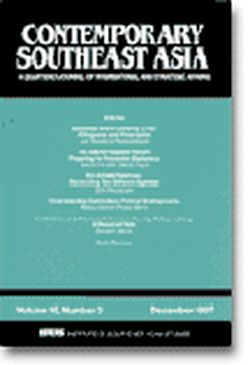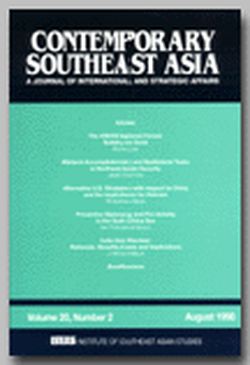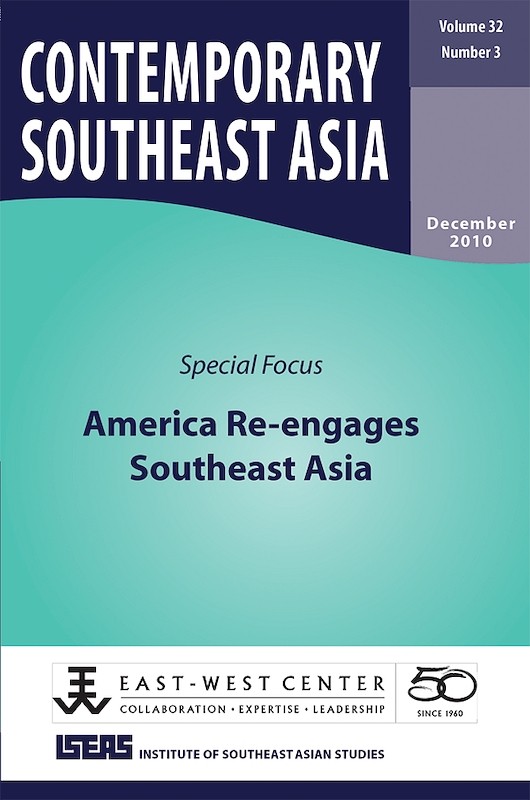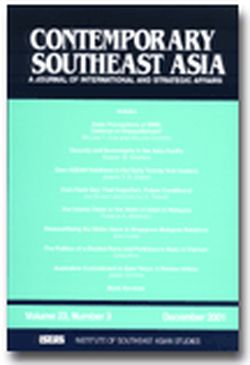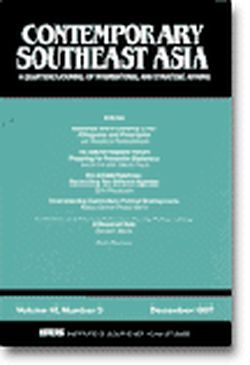Contemporary Southeast Asia: A Journal of International and Strategic Affairs Vol. 18/4 (Mar 1997)
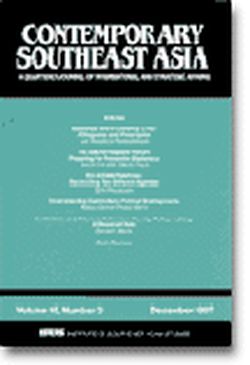
Date of publication:
March 1997
Number of pages:
95
Code:
CS18/4
Contents
-
Preliminary pages
- ARTICLES
-
Defence Force Modernization in Asia: Towards 2000 and Beyond, by Paul Dibb, author see abstractMost of the academic literature about Asia's defense modernization has tended to focus - in a rather alarmist way - on the details of the acquisition of military platforms. Discussion has tended to center on whether there is an arms race in the region and if power projection forces are being acquired. This article takes a different view: it discounts the arms race and power projection theses, whilst acknowledging that there are competitive elements of the arms build - up and an increasing capacity to extend Military reach. But the most important finding is that there are - and are likely to be over the next decade - serious deficiencies in the military capabilities of most Asian defense forces. These deficiencies reside principally in information warfare, maintenance and integrated logistic support, and joint force doctrine. And they are more pronounced in Southeast Asia than elsewhere in Asia. Unless they are rectified, these weaknesses will undermine combat effectiveness seriously.
-
Fallout and Fall-outs: Nuclear Power in Southeast Asia, by Jon Barnett, author see abstractThe rapidly developing economies of Southeast Asia are being targeted as markets for nuclear power. Alternative views are difficult to hear above the noise of nuclear industry advocates. A critical issue for the region is the desirability of an energy technology that has been thoroughly tested and progressively rejected by the developed world. The region's policy-makers need to have all available information about the benefits and costs of nuclear power in order to make an informed decision. This article seeks to outline concerns about nuclear power in Southeast Asia. It is suggested that given its many unresolved environmental problems, economic disbenefits and political risks, nuclear power is not a desirable development for the states of Southeast Asia.
-
Hegemonic America:The Benign Superpower?, by Bob Catley, author see abstractAt the end of World War II, the United States was recognized as the world's most powerful country and it initially sought with some success to implement its objective of a liberal world order based on decolonization, multilateral institutions, free trade, and democratic ideals. This policy was stymied by the onset of the Cold War, and strategic imperatives thereafter took precedence. After its defeat in Vietnam some commentators claimed that American power was in decline, and even during its resurgence under President Ronald Reagan in the 1980s they argued that this could not be sustained. These "declinists" were wrong. After the collapse of the Soviet Union, the United States re-emerged as the dominant power in the world, pursuing the liberal agenda it partly abandoned in the 1940s. Indeed, its political military and economic power is such that it may be regarded as a near hegemon. But since its liberal agenda is chiefly progressive, its influence will prove largely benign.
-
Mixed Signals on Korean Security, by James Cotton, author see abstractNorth Korea is still in a phase of leadership transition. Natural disasters, defections, and possible social instability have further complicated the security choices the regime must make. North Korea has been prepared to engage with the United States in observing the "Agreed Framework" which was negotiated in 1994 to resolve the nuclear issue, and is pursuing limited economic reform. After the submarine incident of 1996, North Korea also took part in a briefing which may lead to the "Four-Party Talks" proposal of the United States and South Korea (and which also involves China) being realized. However, disputes over the Military Armistice Commission on the peninsula and other issues indicate that inter-Korean relations are still poor. Reading these mixed signals raises acute difficulties for policy-makers in Seoul. Only comprehensive exchanges between the two Koreas will stabilize the security situation on the peninsula.
-
The Myth of Cambodia's Recovery, by L Shelton Woods, author see abstract"Pol Pot is dead." "The Khmer Rouge defect." "Hun Sen bring, peace to Cambodia." "Invest in Cambodia." These headlines flashed across journals and newspapers in 1996. They all seem to point to growing political and social stability in Cambodia. But the supposed stability in Cambodia is really a facade. Today, within Southeast Asia, Cambodia is more akin to the draconian state of myanmar than to the more open societies of Singapore, the Philippines and other ASEAN states. Thus, many of these 1996 headlines have proved to be false while others have not been confirmed. This article examines the current political structure within Cambodia. The supposed defection of long-time Khmer Rouge leader, Ieng Sary, does not assure peace for Cambodia. Bitter .relations between the two major Cambodian political parties (FUNCINPEC and the Cambodian People's Party) and the two prime ministers, Hun Sen and Norodom Ranariddh, expose the veneer of stability beneath which a discontented rumbling grows.
- BOOK REVIEWS
-
BOOK REVIEW: Major Powers at a Crossroads: Economic Interdependence and Asia Pacific Security Community by Ming Zhang., by Leszek Buszynski, author
-
BOOK REVIEW: The Transformation of Security in the Asia Pacific Region edited by Desmond Ball., by Richard Stubbs, author
-
BOOK REVIEW: Asia in the 21st Century: Evolving Strategic Priorities by Michael Bellows., by Robin Ramcharan, author


